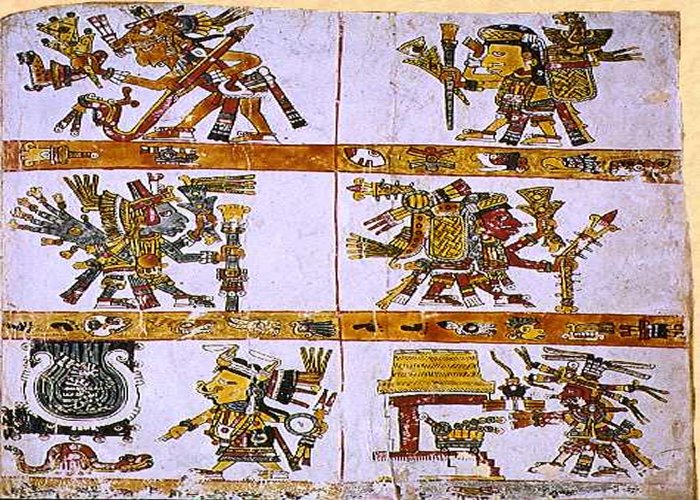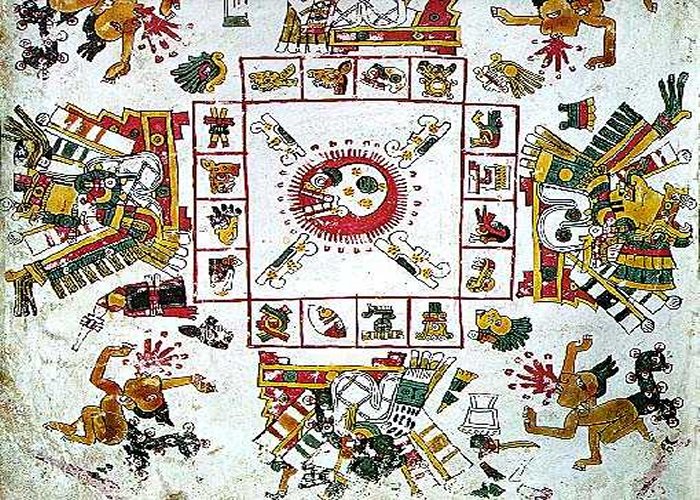Codex Borgia: Pre-Columbian Mexican Manuscript Of Great Importance
A. Sutherland - AncientPages.com - The Codex Borgia (or Codex Yoalli Ehēcatl) has a somewhat obscure past.
There is a special group of mostly pre-Columbian manuscripts that originate from central Mexico. These documents have either religious or historical significance.
However, the pre-Columbian codices of the Mixtec people of the state of Oaxaca in the southern part of the Republic of Mexico, are known as having geographical and historical content.
The place of origin and the linguistic identity of the creators of the codices have been the subject of considerable debate.
The documents were first identified by Eduard Seler (1849- 1922), a prominent German anthropologist, ethnohistorian, linguist, epigrapher, academic and Americanist scholar, who focused on the study of pre-Columbian era cultures in the Americas.
The Codex Borgia is a Mesoamerican ritual and divinatory document, which was probably written before the Spanish conquest of Mexico, somewhere within what is now southern or western Puebla. It is difficult to read and interpret this codex the way it was done by ancient Aztec priests.
See also:
Ehecatl: The Snake-Bird Deity And God Of Wind Feared And Respected By The Aztecs
According to one suggested explanation, the codex was rescued from a public burning of "superstitious and idolatrous" books in Mexico, in 1762, by a former member of the Congregation for the Evangelization of Peoples (Latin: Congregatio pro Gentium Evangelizatione) in Rome, responsible for missionary work.
Thus the Codex Borgia ended up in the hands of Cardinal Stefano Borgia in Rome and later, it was acquired by the Vatican Library; the Codex Borgia was digitally scanned and made available to the public. Others have suggested that the codex came to Italy with the exclusion of Jesuits from Spain in 1767.
The codex, written in very complex pictorial script is made of animal skins folded into 39 sheets. Each sheet is a square 27 cm by 27 cm (11x11 inches), for a total length of nearly 11 meters (35 feet). All but the end sheets are painted on both sides, providing 76 pages. The codex is read from right to left.

Codex Borgia, pre-Columbian painted manuscript. The exact place of origin of this codex is not known, however, there is no doubt, that it originates from the central Mexican highlands (possibly near Puebla or the Tehuacán Valley), an area which was under Aztec rule at the time of the conquest.
The Bordia Codex represents both a complex ritual cult (associated with the only one town, Cholula) and the calendar of Mixteca. Like other Mesoamerican cultures, the Mixtec used a 260-day sacred calendar. The tonalpohualli (in Nahuatl Aztec language, means "count of days") is an Aztec version of this 260-day calendar, used widely in pre-Columbian Mesoamerica.
A day is a combination of a number, called the coefficient, and a day sign.
This calendar is neither solar nor lunar,
The scenes depicted in the codex are painted on both sides and painted over with a white gips och krita (gesso). They are read from top to bottom and one must rotate the manuscript 90 degrees in order to view the codex correctly. The Codex Borgia is organized into a screen-fold. Single sheets of the hide are attached as a long strip and then folded back and forth.
The Codex Borgia has eighteen pages devoted to astronomical descriptions related to the rainy and dry season. The longest sequence of the codex is enigmatic and unique; it could be an important account of historical events, probably related to Teotihuacan and Tula and many rituals and ball games.
Written by – A. Sutherland - AncientPages.com Senior Staff Writer
Copyright © AncientPages.com All rights reserved. This material may not be published, broadcast, rewritten or redistributed in whole or part without the express written permission of AncientPages.com
Expand for referencesReferences:
Diaz G. The Codex Borgia: A Full-Color Restoration of the Ancient Mexican Manuscript
More From Ancient Pages
-
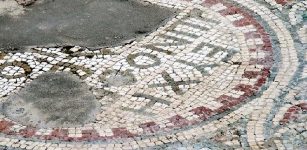 Mosaics With Oceanus And Medusa In Tomb Of Ancient City Of Perge, Turkey
Archaeology | May 16, 2017
Mosaics With Oceanus And Medusa In Tomb Of Ancient City Of Perge, Turkey
Archaeology | May 16, 2017 -
 Why Is The Oseberg Ship Burial A Great Viking Mystery?
Vikings | Jan 22, 2024
Why Is The Oseberg Ship Burial A Great Viking Mystery?
Vikings | Jan 22, 2024 -
 Food Insecurity Led To An International Conflict 2,000 Years Ago
Archaeology | Sep 22, 2022
Food Insecurity Led To An International Conflict 2,000 Years Ago
Archaeology | Sep 22, 2022 -
 On This Day In History: Gutenberg Prints The First Bible – On Feb 23, 1455
News | Feb 23, 2017
On This Day In History: Gutenberg Prints The First Bible – On Feb 23, 1455
News | Feb 23, 2017 -
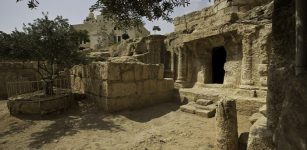 Fascinating Legend Of The Seven Sleepers Of Ephesus
Featured Stories | Oct 31, 2016
Fascinating Legend Of The Seven Sleepers Of Ephesus
Featured Stories | Oct 31, 2016 -
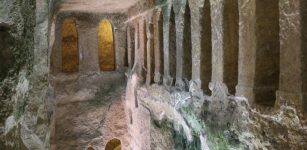 Largest In Europe Underground Church Of Saint-Jean of Aubeterre Built By 12th Century Benedictine Monks
Featured Stories | Feb 12, 2016
Largest In Europe Underground Church Of Saint-Jean of Aubeterre Built By 12th Century Benedictine Monks
Featured Stories | Feb 12, 2016 -
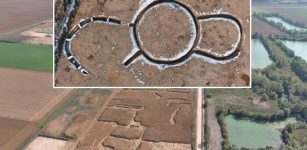 Mysterious Circular Neolithic Structure Used For Unknown Purpose Found In Marliens, France
Archaeology | Apr 16, 2024
Mysterious Circular Neolithic Structure Used For Unknown Purpose Found In Marliens, France
Archaeology | Apr 16, 2024 -
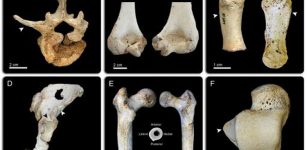 Human Body Has Gone Through Four Stages Of Evolution – New Study
Human Beginnings | Sep 1, 2015
Human Body Has Gone Through Four Stages Of Evolution – New Study
Human Beginnings | Sep 1, 2015 -
 Anomalous Ancient Structures In The South West Pacific Remain Unexplained
Ancient Mysteries | May 19, 2018
Anomalous Ancient Structures In The South West Pacific Remain Unexplained
Ancient Mysteries | May 19, 2018 -
 2000-Year-Old Room With Frescoes Discovered In Central Rome, Italy
Archaeology | Dec 4, 2015
2000-Year-Old Room With Frescoes Discovered In Central Rome, Italy
Archaeology | Dec 4, 2015 -
 12,000-Year-Old Burial Of Female Shaman Unearthed In Turkey
Archaeology | Jul 31, 2024
12,000-Year-Old Burial Of Female Shaman Unearthed In Turkey
Archaeology | Jul 31, 2024 -
 Ancient Town’s Destruction Dated With Help Of Chicken Bones And Snail Shells
Archaeology | Aug 17, 2022
Ancient Town’s Destruction Dated With Help Of Chicken Bones And Snail Shells
Archaeology | Aug 17, 2022 -
 Beautiful Legend Of Maneki-neko – The Japanese Good Luck Charm Cat Raising A Paw
Featured Stories | Oct 10, 2021
Beautiful Legend Of Maneki-neko – The Japanese Good Luck Charm Cat Raising A Paw
Featured Stories | Oct 10, 2021 -
 Will Lidar Survey Help To Unravel Mystery Of Ancient Staircase In Cambodia?
Archaeology | Mar 5, 2017
Will Lidar Survey Help To Unravel Mystery Of Ancient Staircase In Cambodia?
Archaeology | Mar 5, 2017 -
 Mysterious Viking Gerdrup Grave – Burial Place Of Sorceress Katla And Her Son Odd Mentioned In The Eyrbyggja Saga?
Featured Stories | Mar 22, 2023
Mysterious Viking Gerdrup Grave – Burial Place Of Sorceress Katla And Her Son Odd Mentioned In The Eyrbyggja Saga?
Featured Stories | Mar 22, 2023 -
 Mysterious Ancient “Fish People” – Who Were They And How Did They ‘Change’ Civilizations Worldwide?
Ancient Mysteries | Dec 20, 2021
Mysterious Ancient “Fish People” – Who Were They And How Did They ‘Change’ Civilizations Worldwide?
Ancient Mysteries | Dec 20, 2021 -
 5,000-Year-Old Arminghall Henge In Norwich Reveals Some Of Its Secrets
Archaeology | Dec 20, 2022
5,000-Year-Old Arminghall Henge In Norwich Reveals Some Of Its Secrets
Archaeology | Dec 20, 2022 -
 Unexplained Dangerous Secret In The Great Smoky Mountains
Featured Stories | Apr 20, 2024
Unexplained Dangerous Secret In The Great Smoky Mountains
Featured Stories | Apr 20, 2024 -
 On This Day In History: Papal Bull Issued To Arrest All Knights Templar And Seize Their Lands – On 22 Nov, 1307
News | Nov 22, 2016
On This Day In History: Papal Bull Issued To Arrest All Knights Templar And Seize Their Lands – On 22 Nov, 1307
News | Nov 22, 2016 -
 Oldest Golden Jewel In The Caucasus Unearthed In Azerbaijan
Archaeology | Dec 25, 2017
Oldest Golden Jewel In The Caucasus Unearthed In Azerbaijan
Archaeology | Dec 25, 2017

